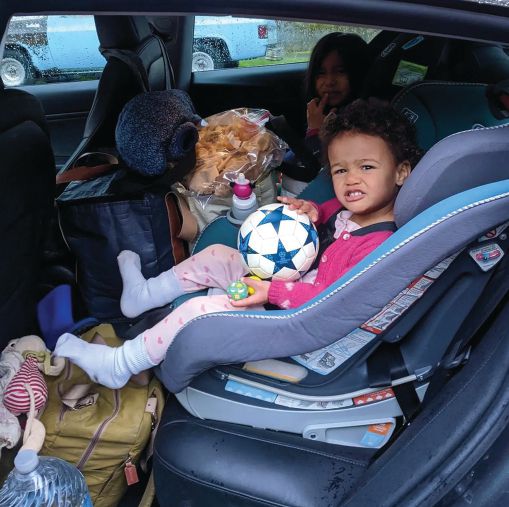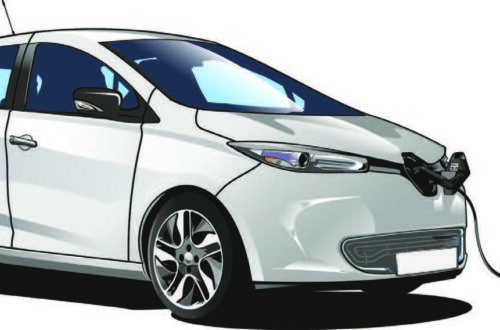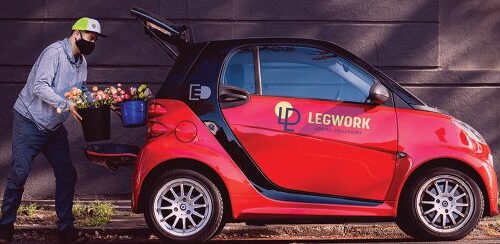Lessons Learned From A Cross Country EV Road Trip
If there is one Achilles heel of the electric automobile (EV), it’s the road trip. Even if the road trip is something we only very occasionally ask of our personal vehicles, it’s still a crucial aspect of the American car owner experience
I’ve been singing the praises of electric transport for four years, so it was only fitting that I put my money where my mouth is and attempt not just a local EV road trip, but the most sacred and grueling of American long drives — the Cross Country Road Trip.
My family of four (with kids ages 5 and 1) decided to drive from Oregon to Ohio in our two-year-old, 310-mile-range Tesla Model 3 to see my parents and sister (who are vaccinated) and whom we haven’t seen in over a year due to COVID. Along the way, we stayed in Airbnbs, limited our contact with others, enjoyed stunning scenery, and enjoyed this first opportunity to leave our city in a long time.
Long story short, our trip was phenomenal. Our EV surpassed any ICE car in fueling cost and pollution reduction and came close to matching the traditional auto in how easy it was to “fill’er up.” In total, it took 41 hours of driving and 5 hours of charging to go 2,747 miles. Here are 9 “road trip” lessons we learned along the way.
Lesson 1 — There is room for everything
One initial concern was whether the Model 3 trunk and frunk would fit all the stuff a family of four needs for 8 days of traveling (across many different climates) and two months living in another state. We also packed all our own food for the trip, because we didn’t want to take unnecessary pandemic risks going to grocery stores or restaurants, and my wife is a genius at meal planning and didn’t want to worry about what/how to feed kids throughout grueling days in the car.
Yet even with duffel bags, strollers, seven bags of food, games, books, toys, and cloth diapers in the frunk (pro tip — dirty diapers deserve their own compartment), we all still fit just fine. Maybe it was all our Tesla’s extra storage compartments, or maybe we just packed to fit the space we had (my wife gets the credit for this amazing feat, too, with her uncanny spatial sensibilities), but, regardless, we didn’t buy or need a car-top carrier. Of course, the car was a chaotic, claustrophobic mess by day 8, but that would probably have happened in any size car.
Lesson 2 — Trust the car
My colleague, Kelly Yearick, had advised me to “trust the car” when she took a cross-country road trip to North Carolina a couple of months ago. Trusting the car meant letting the car guide us on where and how often to stop and how long to charge. Even though Tesla’s “trip planning” feature is supposedly in “beta” mode, we found it to be an invaluable road trip tool. It eliminates any worry about charging. Although we planned our route and charging stops well in advance, we learned that we really didn’t need to. Every morning, we asked the car to navigate to the next destination and it told us where and for how long we would have to charge along the way.
The car factors in speed limits and elevation changes so that even when driving 80 mph and heading up a mountain (in Wyoming, for example) we had plenty of charge to get to the next Supercharger. The car is very conservative in its calculations, and we always exceeded its initial estimated predictions by a couple of percentage points when we arrived at our next charging stop.
Finally, the fact that the car counts down required charge time, while plugged in, is an amazing feature that allowed us to continue on our way as quickly as possible. Each stop allowed bathroom breaks and diaper changes and then we’d glance at the Tesla app on our phones and say, “wow only five minutes left of charging — let’s get the kids in their car seats.”
Lesson 3 — Charge overnight
When arriving at our destination, we would always look for a place to charge overnight so that we could hit the road the next morning with as full a charge as possible. This usually meant looking for a Level 2 charger nearby, or a standard outlet if we were staying longer than one night. Many road trippers book hotels that have “destination chargers,” but we didn’t since we opted for Airbnbs.
Through the PlugShare app, we always found Level 2 chargers within a couple of blocks of our Airbnb, and they were always free. In Boise, we charged at Fairly Reliable Bob’s, an incredibly generous business that has four free Level 2 chargers for public use. In Jackson, WY, we had an outdoor 110 plug right near our parking spot, which worked perfectly because we stayed three nights, giving us time to trickle charge. In Nebraska, we stayed in a cabin at an RV park and had access to a 240-volt charger typically used by RVs. In Springfield, Illinois, I found another generous auto shop (0.2 miles from our Airbnb) that let me park and use its Level 2 charger overnight for free. None of these charging stops involved much preplanning. We found that level 2 charging infrastructure is becoming increasingly prevalent, so overnight charging is possible almost anywhere you go. It also demonstrates the generosity of the EV community, which is something we plan to pay back by offering free charging at our house when we get home.
Lesson 4 — Tesla’s charging network is unbelievable and much cheaper than gas
Tesla has privately funded its own network of fueling stations and deployed them on every major cross-country route in the US. The system is light years ahead of the competition when it comes to user experience, accessibility, and speed of charging.
We stopped at 14 fast chargers over 2700 miles. We figure that even on road trips that rely on more expensive superchargers, you pay less than 1/3rd the cost for fuel compared to an ICE car.
Lesson 5 — Tesla chargers are located in mostly ugly places
Tesla Superchargers are sited in convenient locations that allow you to pull off the highway, charge, and quickly return to your route. Unfortunately, this means that charging occurs in some of the ugliest examples of American sprawl. One strip mall with expansive parking lots and garbage-strewn berms after another awaits you on a Tesla road trip.
I’d love to see beautiful recharging stations with solar panels, healthy refreshments, and located in places where EV drivers can support local businesses while they charge. Might sound like a pipe dream, but so did the EV road trip 5 years ago.
Lesson 6 — 300 miles of range is amazing. With 400–500 miles of range, the ICE-car fueling advantage will disappear
At western fast highway speeds, our 300-mile range was more like 220–240 miles. That was fine with our young kids. We’d drive for two to three hours, which was usually the boiling point for our kids anyway, the point when they desperately needed to get some fresh air and movement.
But it left me thinking that when the electric vehicles of the future come with 500 miles of range (which will translate to about 400 miles of high-speed driving range), one could complete a full day of cross country driving with just a 15 minute stop to charge. At that point, electric cars will achieve complete convenience parity with ICE vehicles, and people without young kids who wanted to push through on massive consecutive hours of driving can do so. Key to this future is access to Level 2 charging, or 240 outlets, at every house and hotel to allow overnight charging.
Lesson 7 — EV road trips are great for kids
This lesson builds on the prior one. The fact that you have to stop to charge every two to three hours on an EV road trip works really well for young kids to get out, stretch, and run around in ugly parking lots (see Lesson 5).
Lesson 8 — Coordinate all stopping needs with charging
Because we were stopping every two to three hours for 15 to 20 minutes each time, we made sure not to stop at other times. This is a key strategy for keeping your trip on schedule. Every charging stop included a bathroom break and usually lunch or a snack outside the car. Several of the fast chargers were located near grocery stores, so we occasionally went in for bathrooms and to add variety to our food supply
Lesson 9 — Wind energy is taking over the country
Along with the realization that EVs have come of age, we noticed another clean energy transformation that has taken place since our previous cross-country journey in 2013. Wind turbines are becoming ubiquitous across the diverse national landscape, and they are now a significant feature in all of the 8 states we drove through. It was nice to think that many of those electrons surely made it into our car and enabled us to drive to our next destination.
Conclusion
All and all, we had a fantastic trip, which we’ll repeat in a couple of weeks when we head home. We saw magnificent American landscapes and joined the growing number of EV road trippers proving that electric vehicles have arrived in any and all contexts, even massive coast-to-coast drives with kids.
Joe Wachunas lives in Portland, Oregon, and works for the nonprofit Forth, which promotes electric transportation. He is also involved with Electrify Now because he believes that electrifying everything, from transportation to homes, is the quickest path to an equitable, clean energy future. And of course, Joe and his family live in an all-electric home and drive an EV.






